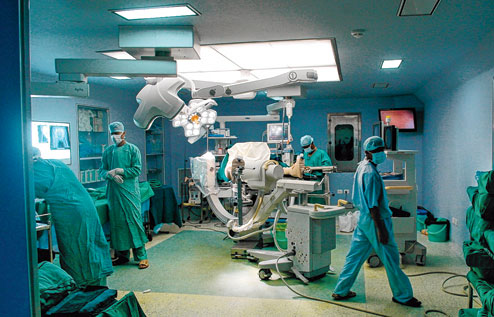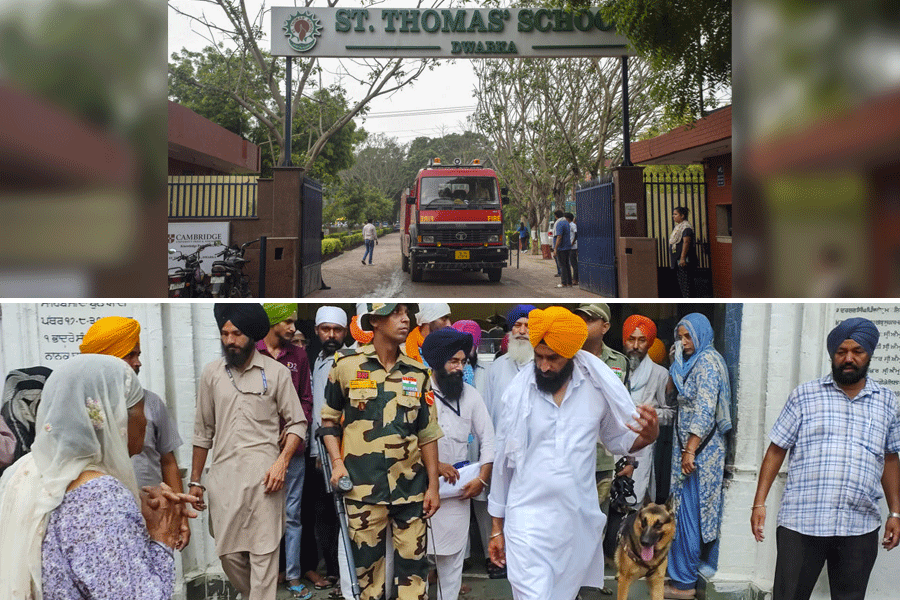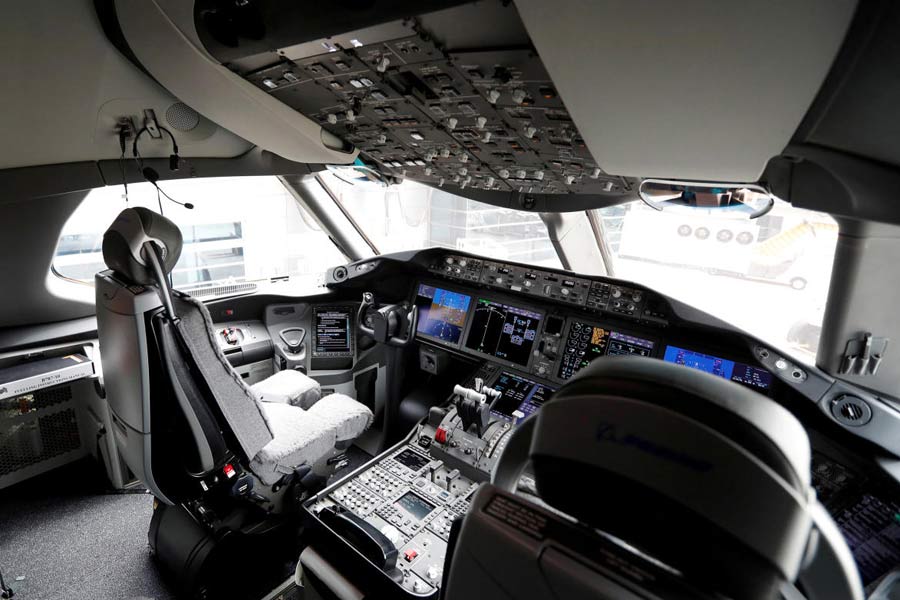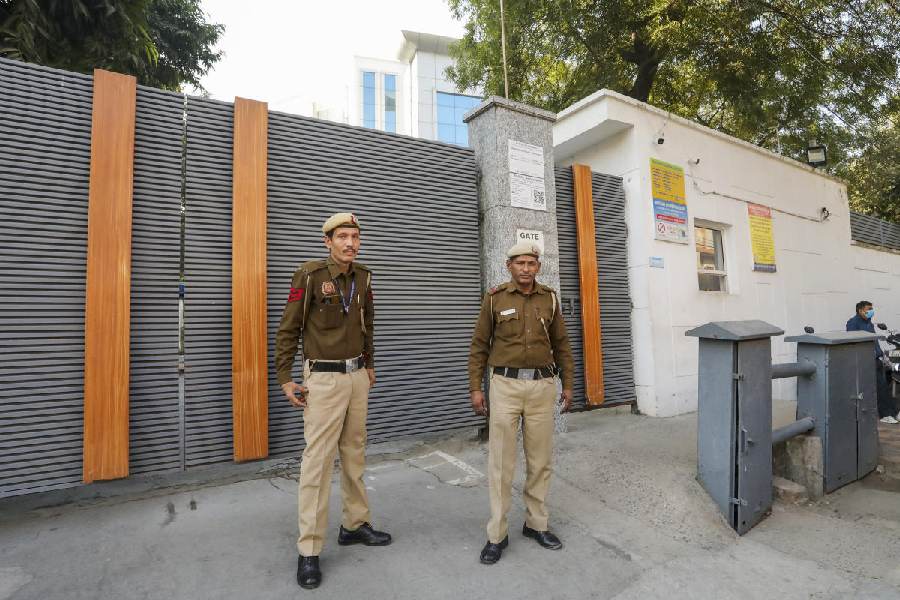 |
| A steel operating theatre at Peerless Hospital. Pictures by Bishwarup Dutta |
A steel shell makes a safer operating theatre than one made of concrete and wood but most hospitals in Calcutta are yet to embrace the change that arrived in some other Indian cities a decade back.
Doctors said steel, being non-porous, does not let microbes grow on the walls and ceiling of an OT, thereby reducing the chance of infection in patients.
Peerless Hospital is the first hospital in the city to convert all its OTs into steel rooms, promising to cut down on infection.
But what is a steel OT like? Metro tries to find out.
What is a modular steel OT?
The walls and roof of the OT are covered with a seamless steel sheet given a coat of anti-bacterial and anti-fungal paint. The corners have curves but no sharp edges. The few joints there are have metal fillers.
There are no wooden or concrete structures inside the room, not even tables or shelves. The shelves, where surgical instruments and emergency medicines are stored, are built into the steel walls and have glass covers. Thermal pads are placed between the concrete wall and the steel sheet to control temperature.
Floors have tiles fitted on copper mesh with coats of anti-microbe paints.
The OTs have sliding metallic airtight doors, operated by sensors.
What does a conventional OT have?
A conventional OT is like any other room, made of concrete walls and floors. The walls and floors are given a coat of anti-microbe paint.
Why is a steel OT better than a conventional OT?
“Steel interiors help in better infection control. Since it’s seamless and free of joints, the possibility of accumulation of dust and germs in small corners is less,” said cardiac surgeon Kunal Sarkar.
The steel sheets are easier to clean compared with concrete walls. A conventional OT requires fumigation after every major surgery but a steel OT needs it once in a while. Despite that a steel OT is better sterilised than a conventional one, said doctors. Besides, there is more space for surgeons and others to move around as there are no wooden racks.
How does it help a patient?
In many cases, doctors said, a patient’s hospital stay gets longer because of infection acquired from the OT during or after surgery. “Patients undergoing surgeries like joint replacements are vulnerable to such infections,” said orthopaedic surgeon P. K. Banerjee. Also, less chance of infection would mean less antibiotics for patients post-surgery.
“In the West, where all OTs are of steel, doctors prescribe low-grade antibiotics before or after surgery as the chances of infection are minimum. In a gall bladder stone surgery, doctors in the UK don’t use antibiotics at all,” said surgical gastroenterologist Sanjay De Bakshi.
Cardiac surgeon Ramakanta Panda of Mumbai’s Asia Heart Institute, which had steel OTs, prescribes only first-generation antibiotics after a bypass surgery. In Calcutta, third or fourth generation antibiotics are used to prevent infections after such a complicated surgery.
Panda, who led a team of doctors that operated on Prime Minister Manmohan Singh in January 2009, said his hospital had installed modular steel OTs 13 years ago.
How do Calcutta’s hospitals score on this front?
Peerless Hospital has recently converted all its seven OTs into modular steel facilities. The steel shells were built at Nasik and installed here. The anti-bacterial and anti-fungal paints were imported from the UK while the pendants and lights were brought from Germany. “We have spent Rs 3.6 crore on installing the steel OTs,” said Sudipta Mitra, the chief executive of the hospital’s medical projects.
Why don’t other hospitals have it?
Some of the hospitals said their OTs were too busy to be closed for upgrade while others cited high cost. BM Birla Heart Research Centre has one steel OT. “We have plans to convert the others into steel structures but those can’t be closed down for a long period,” said Rupak Barua, the CEO of the hospital.
An OT may have to be closed for almost two months to revamp it with steel.
Apollo Gleneagles Hospitals has “super-speciality” OTs but none is of steel. “The concrete walls in the OTs are given coats of anti-fungal and anti bacterial paints. We could have installed modular steel OTs but decided not to as they don’t have any scientific advantage,” said Rupali Basu, the CEO of the Bypass hospital.
The Tata Medical Center in New Town, one of the newest in the city, has “steel OTs” but they are not modular. “The steel interiors are customised, with each component installed separately. Although the walls and roofs are of steel, there are joints,” said an official of the hospital.
How is the modular steel structure made?
The steel shell is manufactured in a factory and transferred to the hospital. “The finishing — putting the paint, moulding some sharp edges and filling up of joints with metal — is done at the site,” said Mohammad Ashraf, the director of Mediconz, the Mumbai company that has done the job at Peerless. It takes about 15 days after the installation for the OT to become ready for a surgery, he said.
 |
| Medicine shelves and a stand for X-ray plates built into steel walls. In a conventional OT they jut out of walls |
 |











